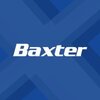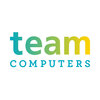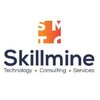Data Center Engineer
30+ Data Center Engineer Interview Questions and Answers

Asked in Genpact

Q. What are the hardware and software layers in the OSI model?
Hardware and software layers are part of the OSI model, which defines how data is transmitted over a network.
Hardware layer (Layer 1) is responsible for transmitting raw bits over a physical medium.
Software layer (Layer 7) is responsible for providing user applications with access to the network.
Other layers in between handle tasks such as error detection and correction, routing, and data formatting.
Examples of hardware layer devices include network interface cards (NICs) and...read more
Asked in Praxien

Q. What are the differences and similarities between the C and Java programming languages?
C is a procedural language, while Java is an object-oriented language, each with unique features and use cases.
C is a low-level language, closer to hardware; Java is high-level, abstracting hardware details.
C uses pointers for memory management; Java uses automatic garbage collection.
C is compiled to machine code; Java is compiled to bytecode, which runs on the Java Virtual Machine (JVM).
C supports procedural programming; Java supports object-oriented programming with classes...read more

Asked in Genpact

Q. What is the core layer of the OSI model?
The heart of OSI Layer is the Transport Layer.
The Transport Layer is responsible for end-to-end communication between hosts.
It ensures reliable and error-free data transfer.
It provides flow control and congestion control mechanisms.
Examples of protocols at this layer include TCP and UDP.

Asked in Genpact

Q. What is the uptime of data centers?
Uptime of data centers refers to the amount of time they are operational and available for use.
Uptime is typically measured as a percentage of total time in a year
Data centers strive for high uptime to ensure continuous availability of services
Factors that can impact uptime include power outages, hardware failures, and maintenance downtime
Industry standards for uptime include Tier I, II, III, and IV, with Tier IV offering the highest level of uptime
Uptime can also be affected...read more

Asked in Baxter International

Q. How can we print the vol show commands?
To print the vol show commands, use the appropriate command-line interface (CLI) or management software.
Use the CLI of the storage system to execute the 'vol show' command.
The specific syntax may vary depending on the storage system being used.
Alternatively, use management software provided by the storage vendor to access and print the vol show commands.
Ensure you have the necessary permissions and access rights to execute the command.
Asked in A S Subhan Enterprises

Q. What is DHCP and how does it work?
DHCP stands for Dynamic Host Configuration Protocol. It is a network protocol that enables devices to obtain IP addresses automatically.
DHCP is used to assign IP addresses to devices on a network.
It allows for the automatic configuration of network settings, such as IP address, subnet mask, default gateway, and DNS servers.
DHCP operates on a client-server model, where a DHCP server manages a pool of available IP addresses and leases them to clients.
When a device connects to a...read more
Data Center Engineer Jobs




Asked in Advance Career Solutions

Q. How did you manage the power requirements for the rack servers?
I ensured optimal power management for rack servers through careful planning, monitoring, and redundancy strategies.
Conducted a power audit to assess the total power requirements of all rack servers.
Implemented power distribution units (PDUs) to manage and distribute power efficiently.
Utilized redundant power supplies to ensure uptime in case of a failure.
Monitored power usage with software tools to identify trends and optimize energy consumption.
Collaborated with the facilit...read more

Asked in Team Computers

Q. What is DNS, and how does it work?
DNS stands for Domain Name System. It is a system that translates domain names into IP addresses.
DNS is like a phonebook for the internet
It helps to locate websites by translating domain names into IP addresses
DNS works through a hierarchical system of servers
The process involves a DNS query, response, and caching
Examples of DNS servers include Google DNS and OpenDNS
Share interview questions and help millions of jobseekers 🌟


Asked in Microsoft Corporation

Q. What is the transformer hormones & what effects
Transformer hormones are hormones that are converted into other hormones in the body, affecting various physiological processes.
Transformer hormones are precursor hormones that are converted into active hormones by specific enzymes in the body.
Examples include thyroxine (T4) being converted into triiodothyronine (T3) in the thyroid gland, and androstenedione being converted into testosterone in the testes.
The conversion of transformer hormones plays a crucial role in regulati...read more

Asked in OCS Group

Q. Operation and maintenance of Electrical equipment
Electrical equipment operation and maintenance is crucial for data center uptime and safety.
Regularly inspect and test electrical equipment to ensure proper functioning.
Follow manufacturer's guidelines for maintenance and repair.
Train staff on safe operation and handling of electrical equipment.
Maintain accurate records of maintenance and repairs.
Have backup power sources in case of power outages.
Examples: UPS systems, generators, transfer switches, circuit breakers, etc.

Asked in Microsoft Corporation

Q. If DG sets experience a power failure, what actions should be taken?
In case of DG sets power failure, specific commands should be executed to address the issue.
Check the fuel level in the DG set and refill if necessary
Inspect the battery for any issues and replace if needed
Restart the DG set and monitor for any error messages
Contact the maintenance team for further assistance if the issue persists

Asked in Tencent

Q. What should you do before turning off a server?
Before turning off a server, it is important to properly shut down all running applications and services to prevent data loss or corruption.
Save any work in progress and close all applications
Ensure all services are stopped gracefully
Check for any pending updates or patches
Backup important data if necessary
Notify users or stakeholders about the planned shutdown
Document the shutdown process for future reference

Asked in Tencent

Q. What tools do you use to check optical fiber?
I use tools like optical power meters, visual fault locators, and OTDRs to check optical fiber.
Optical power meters measure the power level of the optical signal.
Visual fault locators help identify breaks or bends in the fiber.
OTDRs (Optical Time Domain Reflectometers) analyze the quality of the fiber by sending pulses of light and measuring reflections.

Asked in GlobalXperts India

Q. What is a type 1 hypervisor, and can you provide an example?
Type 1 hypervisor is a bare-metal hypervisor that runs directly on the host's hardware to control the hardware and to manage guest operating systems.
Type 1 hypervisors provide high performance and efficiency as they have direct access to the host's hardware.
Examples of type 1 hypervisors include VMware vSphere/ESXi, Microsoft Hyper-V, and Citrix XenServer.

Asked in GlobalXperts India

Q. What is ESXi and how do you deploy it in VMware?
ESXi is a bare-metal hypervisor developed by VMware for virtualization.
ESXi is a type-1 hypervisor, meaning it runs directly on the physical hardware to control the hardware and to manage guest operating systems.
To deploy ESXi in VMware, you need to download the ESXi ISO image from the VMware website.
Create a bootable USB drive or CD/DVD with the ESXi ISO image and boot the server from it.
Follow the on-screen instructions to install ESXi on the server, configure network setti...read more

Asked in Synopsys

Q. Tell me about the OSI model.
OSI Layer is a conceptual model that describes the communication functions of a telecommunication system.
OSI stands for Open Systems Interconnection.
It consists of 7 layers, each with a specific function.
The layers are: Physical, Data Link, Network, Transport, Session, Presentation, and Application.
Each layer communicates with the layer above and below it.
The model helps ensure interoperability between different systems.
Example: HTTP operates at the Application layer, while T...read more

Asked in Baxter International

Q. What commands do you use to display disk information?
The disk show commands are used to display information about disks in a data center.
Use the 'disk show' command followed by specific options to retrieve disk information
Common options include 'disk show -v' for verbose output and 'disk show -a' for all disks
Examples: 'disk show -v' to display detailed disk information, 'disk show -a' to show all disks

Asked in Tencent

Q. What are the different types of optical cables?
Different types of optical cables include single-mode fiber, multi-mode fiber, and plastic optical fiber.
Single-mode fiber: used for long-distance communication, has a small core size and transmits infrared laser light.
Multi-mode fiber: used for shorter distances, has a larger core size and transmits infrared LED light.
Plastic optical fiber: used for short-distance applications like home networks, made of plastic instead of glass.

Asked in Jio

Q. What is RAID configuration and what are the different RAID types?
RAID (Redundant Array of Independent Disks) is a data storage technology that combines multiple disk drives into a single unit for performance improvement and/or data redundancy.
RAID 0: Striping without redundancy, used for performance improvement.
RAID 1: Mirroring for data redundancy, requires at least 2 drives.
RAID 5: Striping with distributed parity, balances performance and redundancy.
RAID 10: Combination of mirroring and striping, offers both performance and redundancy.
R...read more

Asked in Microsoft Corporation

Q. What is the data center PUE?
PUE stands for Power Usage Effectiveness and is a metric used to measure the energy efficiency of a data center.
PUE is calculated by dividing the total amount of power used by the data center by the power used by the IT equipment.
A lower PUE value indicates a more energy-efficient data center.
For example, a data center with a PUE of 1.5 means that for every 1.5 watts of total power consumed, only 1 watt is used by the IT equipment.

Asked in Genpact

Q. What is a Data Center?
A data center is a facility used to house computer systems and associated components, such as telecommunications and storage systems.
Data centers are used to store, manage, and disseminate large amounts of data.
They typically have backup power supplies, cooling systems, and security measures to ensure continuous operation.
Examples of data centers include those operated by Google, Amazon, and Microsoft.
Data centers can be owned and operated by a single organization or shared a...read more

Asked in Nelito System

Q. What is a Tier 3 and Tier 2 data center?
Tier 2 and Tier 3 data centers are classifications based on their infrastructure and redundancy levels.
Tier 2 data centers have redundant components but lack redundancy in power and cooling distribution, while Tier 3 data centers have multiple power and cooling distribution paths.
Tier 2 data centers may have an uptime of 99.741%, while Tier 3 data centers have an uptime of 99.982%.
Tier 2 data centers are more cost-effective but less reliable compared to Tier 3 data centers.
Ti...read more

Asked in Genpact

Q. What are the different types of data centers?
There are mainly four types of data centers: enterprise, colocation, cloud, and edge.
Enterprise data centers are owned and operated by a single organization.
Colocation data centers are facilities where multiple organizations rent space to host their IT equipment.
Cloud data centers are used to provide cloud services to customers.
Edge data centers are smaller facilities located closer to end-users to reduce latency and improve performance.
There are also modular data centers, wh...read more

Asked in Tencent

Q. What components are inside a server?
Components inside a server include CPU, RAM, hard drives, power supply, motherboard, and network interface cards.
CPU (Central Processing Unit) - processes instructions and performs calculations
RAM (Random Access Memory) - stores data and instructions that the CPU needs
Hard drives - store data and programs long-term
Power supply - provides electricity to the server components
Motherboard - connects all the components together
Network interface cards - allow the server to connect ...read more
Asked in Praxien

Q. What is a simple HTML program?
A simple HTML program displays a basic webpage structure with text and images using HTML tags.
<!DOCTYPE html> - Declares the document type and version of HTML.
<html> - The root element of an HTML page.
<head> - Contains meta-information about the document, like title.
<title> - Sets the title of the webpage, shown in the browser tab.
<body> - Contains the content of the webpage, like text and images.
<h1> - Represents a top-level heading.
<p> - Defines a paragraph of text.
<img src...read more

Asked in Microsoft Corporation

Q. Briefly explain the refrigeration cycle.
Refrigerator cycle is a process where refrigerant absorbs heat from inside the fridge, moves it outside, and releases it.
Refrigerant absorbs heat from inside the fridge, cooling the air.
The refrigerant then moves to the compressor where it is compressed into a high-pressure, high-temperature gas.
The hot gas releases heat outside the fridge through the condenser coils, cooling and condensing into a liquid.
The liquid refrigerant then flows through the expansion valve, where it ...read more

Asked in Skillmine Technology Consulting

Q. What is power usage effectiveness?
Power Usage Effectiveness (PUE) is a metric used to measure the energy efficiency of a data center.
PUE is calculated by dividing the total amount of power used by the data center by the power used by the IT equipment.
A PUE of 1.0 indicates that all power is used by IT equipment, while a higher PUE indicates inefficiency.
Lower PUE values are desirable as they indicate higher energy efficiency.
PUE can be improved by implementing energy-saving measures such as using more efficie...read more

Asked in GlobalXperts India

Q. What is a LUN?
LUN stands for Logical Unit Number, a unique identifier for a logical unit in a storage area network.
LUN is used to differentiate between different storage devices or partitions within a storage array.
It helps in managing and accessing data stored on different storage units.
For example, in a SAN environment, each disk or partition may be assigned a LUN for identification.

Asked in Tencent

Q. What is your process for troubleshooting network issues?
Troubleshooting network issues involves identifying the problem, gathering information, isolating the cause, and implementing a solution.
Identify the problem by gathering information from users and monitoring tools
Isolate the cause by checking network configurations, hardware, and software
Implement a solution by making necessary changes and testing the network
Document the troubleshooting process for future reference

Asked in Nelito System

Q. What is data center operations?
Data center operations involve managing and maintaining the day-to-day activities of a data center to ensure optimal performance and reliability.
Monitoring and managing server hardware and software
Ensuring data security and compliance with regulations
Implementing and maintaining backup and disaster recovery plans
Managing network infrastructure and connectivity
Troubleshooting and resolving technical issues
Optimizing energy efficiency and cooling systems
Interview Questions of Similar Designations
Interview Experiences of Popular Companies






Calculate your in-hand salary
Confused about how your in-hand salary is calculated? Enter your annual salary (CTC) and get your in-hand salary


Reviews
Interviews
Salaries
Users










